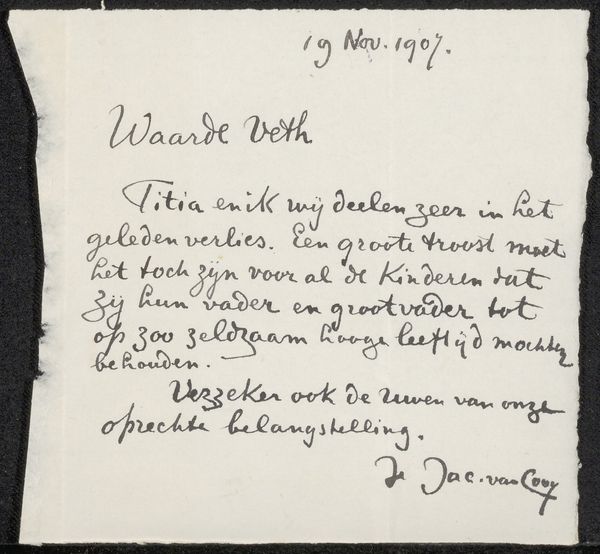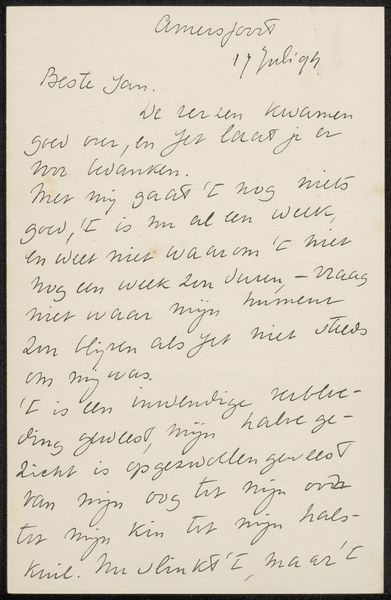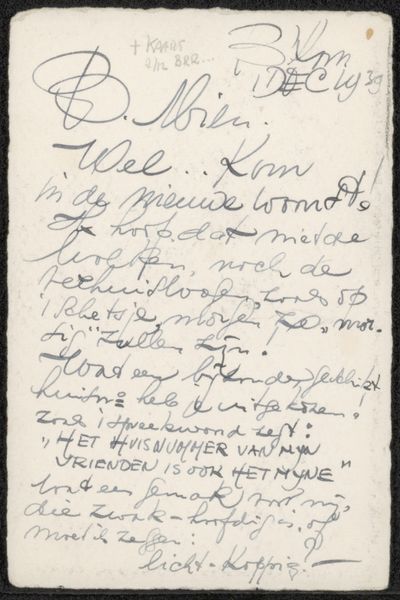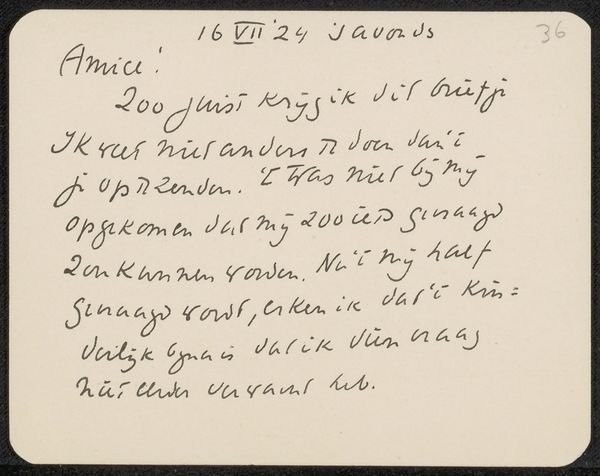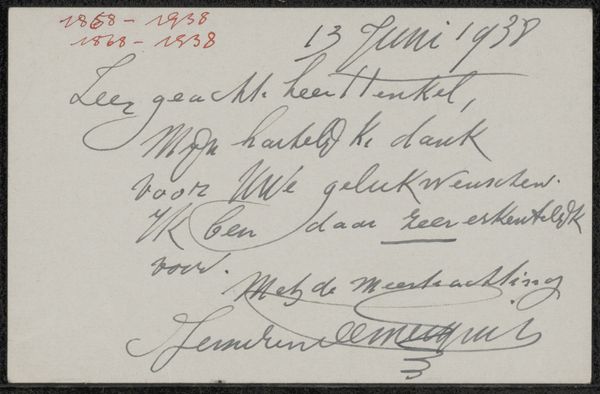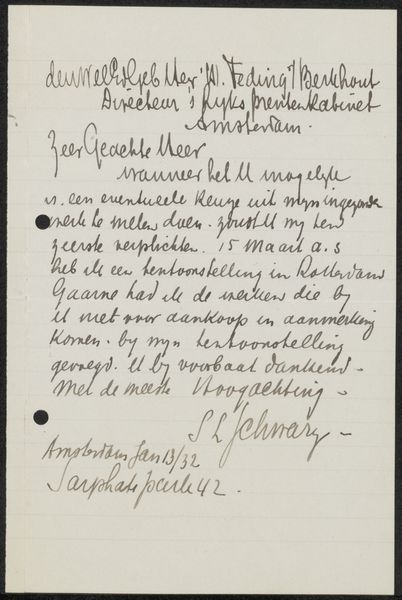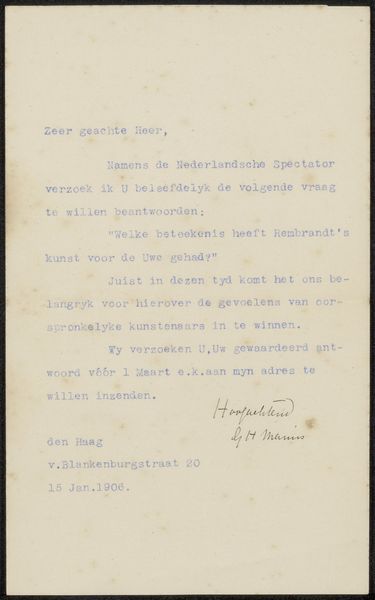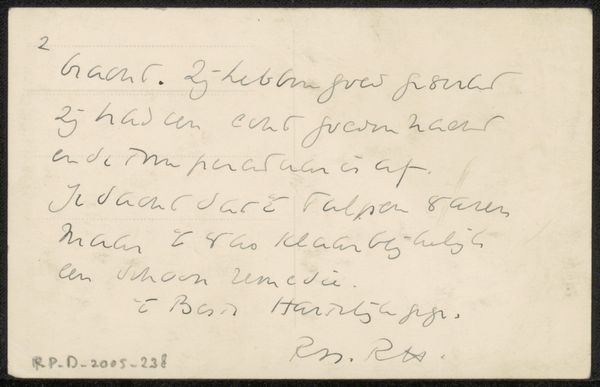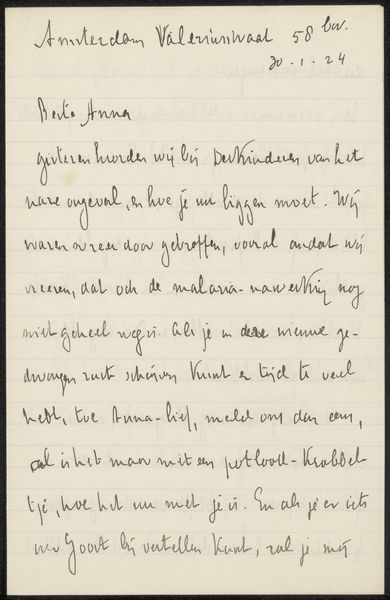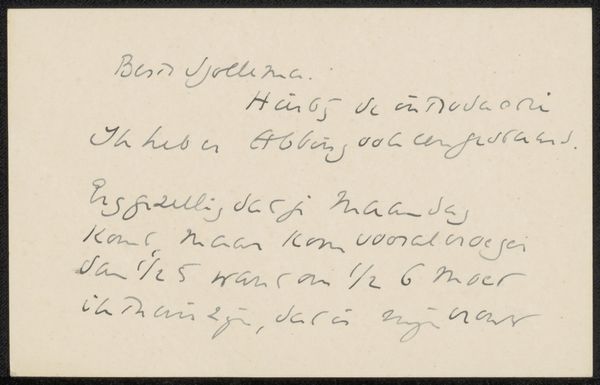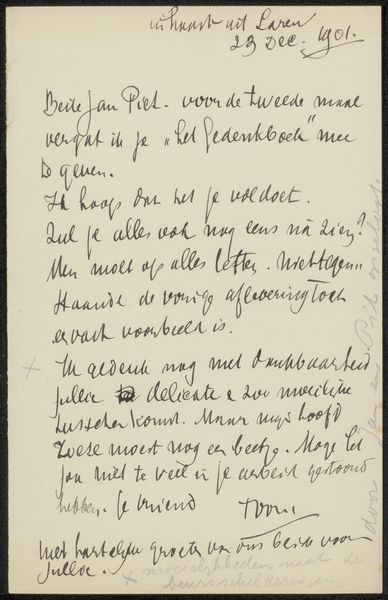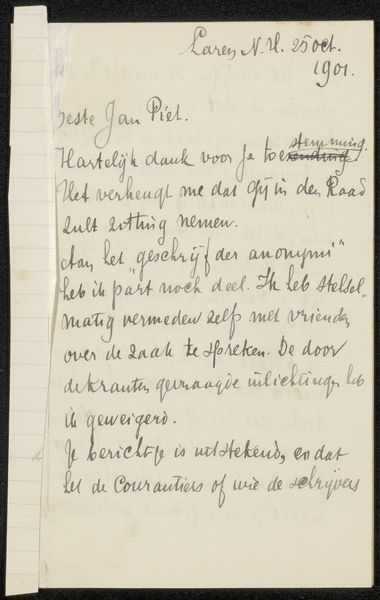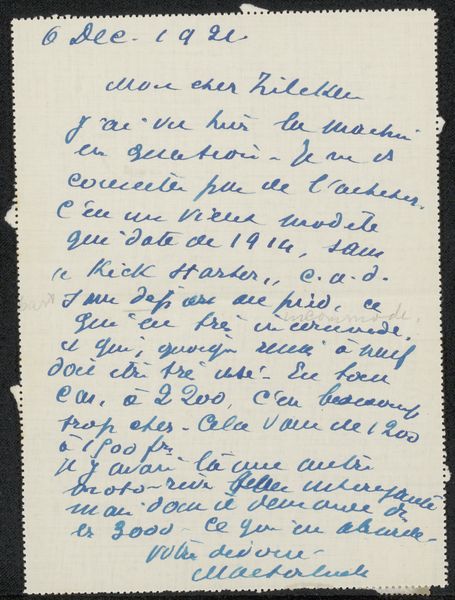
drawing, paper, ink, pen
#
drawing
#
paper
#
ink
#
pen
Copyright: Rijks Museum: Open Domain
Curator: Looking at this pen and ink drawing by Dick Ket, possibly from 1939, which resides here at the Rijksmuseum, one is immediately struck by its raw intimacy. The drawing is titled “Brief aan Mien Cambier van Nooten.” What's your initial impression? Editor: It’s certainly intense. The script feels crammed and energetic, the pen strokes so direct—almost confessional, visually loud. Curator: Yes, there's a powerful presence of the artist revealed in the lettering, particularly the emotional dynamic conveyed in his script. Editor: Letters have often fulfilled crucial roles in cultural history, acting as a conduit for expressing and solidifying opinions among a select segment of society during a specific timeframe. This text itself represents the intimate connection that Dick Ket shared with Mien Cambier van Nooten. Can you elaborate? Curator: Well, the act of handwriting itself, using ink and pen on paper, possesses inherent psychological implications and weight. In essence, Ket leaves an actual trace, a record. The letter, like the drawings and still lifes for which he’s best known, invites reflection. He uses visual cues to convey specific sentiments or even allusions to other people—his art seems to become a stage. Editor: It makes me consider who Mien Cambier van Nooten was. Someone who seems to inspire an urgent need for dialogue. To know he felt so comfortable revealing so much in this brief note, that tells me volumes about their shared connection. It must have had such public, yet completely secret implications! Curator: I concur. The drawing’s historical setting is also of immense relevance. Take the date; assuming that 1939 timestamp to be correct, it marks the period directly preceding the commencement of World War II. Thus, even a relatively mundane artifact such as this communication with Cambier acquires layers of significance when observed from an angle sensitive to historical context. Editor: Looking closely at the flourishes of the writing—the deliberate way certain words are emphasized—it seems charged with emotions, mirroring the world, on the verge of turmoil. And perhaps reflecting his own health issues? Curator: Indeed, a fragile state manifested boldly through imagery and word; this letter encapsulates personal burdens amplified by broader historical currents, made permanent. Editor: I feel like I've gained a better understanding not only of the artwork but of Dick Ket’s existence as an artist in that turbulent epoch. Thank you for pointing out details that bring that historical weight to light.
Comments
No comments
Be the first to comment and join the conversation on the ultimate creative platform.
